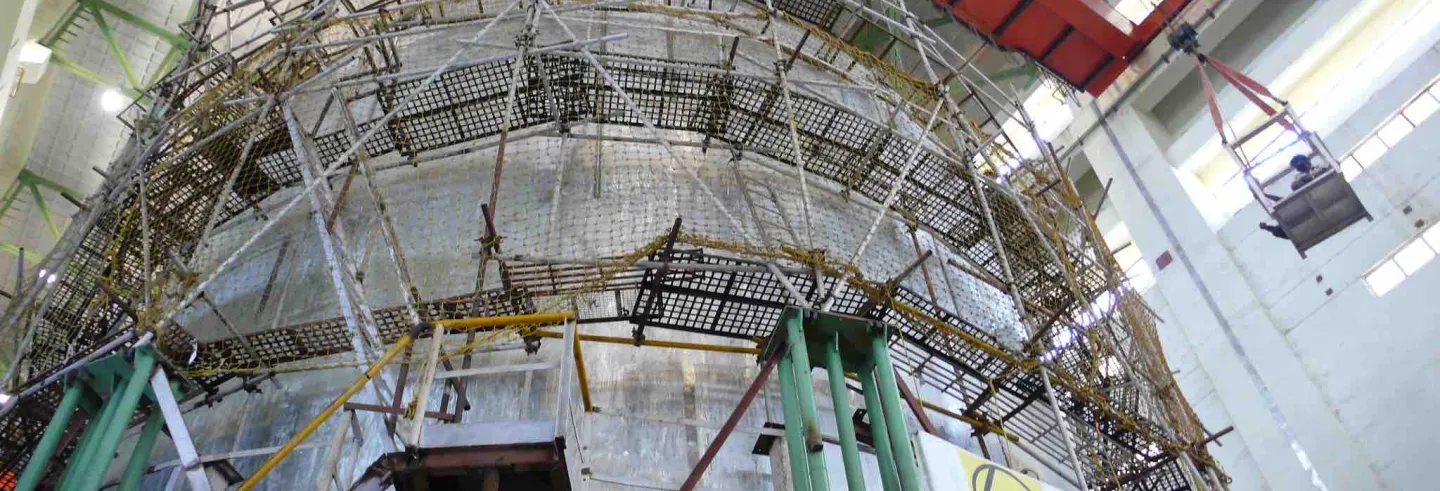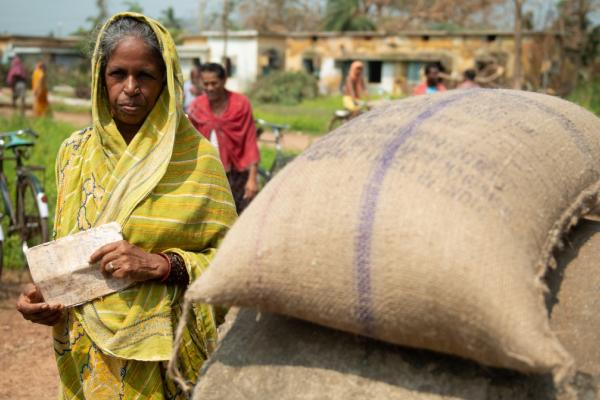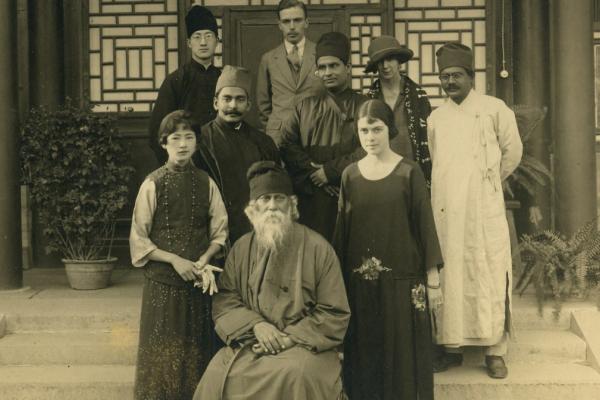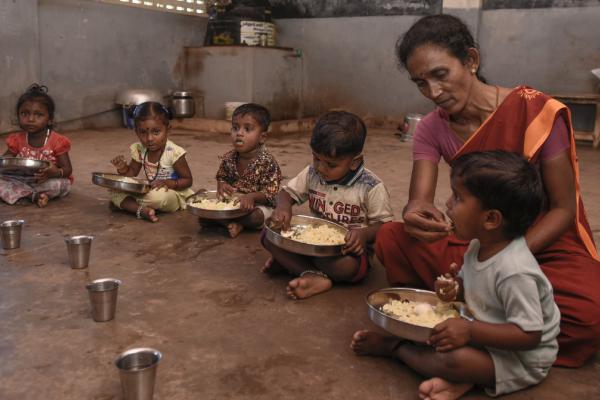It is 2021 and the Prototype Fast Breeder Reactor (PFBR) being constructed in Kalpakkam, Tamil Nadu, by Bharatiya Nabhikiya Vidyut Nigam Ltd (BHAVINI) is officially more than a decade late. Construction of the PFBR started in 2004; at that time the official timeline was the reactor would be starting up (“first criticality” in technical jargon) in 2010 and commercial operation would start in 2011. A recent update from September 2020 says that the PFBR “is expected to get commissioned by October 2022”. There is good reason to expect it to be further delayed.
The PFBR lays bare the failure of planning on the part of India’s nuclear establishment. As it is, nuclear energy has “not contributed significantly to electricity generation” despite decades and decades of sustained funding by governments. The tragedy of pursuing projects like the PFBR is that its failure to deliver on time or at cost could have been foretold. Indeed, there were warnings long ago. The warning still holds.
The place of the PFBR
The PFBR is the Department of Atomic Energy’s (DAE’s) long sought after prize. Breeders are so-called because they produce more chain-reacting fissile material than is put into the reactor. In the case of the PFBR, it is designed to produce more plutonium than is used to fuel it. Lest this seems like a violation of the law of conservation of mass, what happens inside the reactor is the conversion of a certain kind of uranium into plutonium. As the name suggests, the PFBR is a prototype, the first breeder reactor intended to generate sizeable quantities of electricity (500 megawatts), and to be followed by other breeder reactors. During the first decade of this century, senior officials of the DAE publicly put out plans that called for constructing literally hundreds of breeder reactors by mid-century.
The DAE’s fascination with breeder reactors goes back to the 1950s, when the founder of the atomic energy programme in India, Homi Bhabha, proposed a three-phase strategy to expand nuclear energy. The motivation for this strategy was a quandary that plagued Bhabha’s ambitious plans for nuclear energy: India was believed to have only a relatively small resource of good quality uranium ore, the main fuel for nuclear reactors. However, it was known even then that the country did have large reserves of thorium. Thorium has one major short coming: it cannot be used to fuel a nuclear reactor directly. But it can be converted into a chain-reacting form of uranium, by bombarding the substance with neutrons in a breeder reactor.
The idea of using a phased programme involving uranium and thorium was also proposed in October 1954 by François Perrin, the head of the French Atomic Energy Commission. In their case, this strategy followed the discovery of large deposits of thorium ores in Madagascar, then a French colony.
Planning
The DAE has for long promised that it would, sometime in the future, generate large quantities of electricity. Such promises have been an important source of its political power. Breeder reactors have been critical to these promises. Assumptions about how fast breeders could be built lie at the heart of the Department’s numerous projections of nuclear power capacity in India. The projection created in the early 1970s that envisioned 43,000 megawatts of nuclear capacity by 2000 (spoiler alert: the actual figure was less than 3,000 megawatts) was a result of assuming that dozens of breeder reactors would be built by then. If one goes by those projections, the PFBR, which is the first step in this proposed sequence, is decades late already.
Following the projections of the early 1970s, the DAE constituted a steering group in 1979 to draw up a plan for setting up the PFBR, and this group submitted its report in 1980. The first design for the PFBR was proposed in 1983 and the first expenditures on the PFBR started in 1987-88. By that time, the DAE had announced a goal of setting up the reactor by 2000. Safety assessments of the PFBR design started in 1997.
In 1999, the then Chairman of the Atomic Energy Commission (AEC) announced at the International Atomic Energy Agency that construction was “expected to begin in 2001”. The projection was further specified as “April 2001” the following year by the director of the Reactor Group at the Indira Gandhi Centre for Atomic Research (IGCAR), who also added that the project was “expected to be completed in 8 years”.
Rolling timeline
Construction finally started in October 2004 in a prominent function involving then Prime Minister Manmohan Singh unveiling a foundation stone. With the start of construction, the mood was jubilant. The following year, the director announced that the project “will be completed 18 months ahead of schedule” and that four more reactors would come up by 2020.
That was the last time there was any announcement about successfully meeting a scheduled deadline. Instead, what we have seen are announcements that are a bit like a strip tease, with promises of imminent project completion moving forward a little at a time. It is almost like the officials are worried that the public cannot handle the truth, as Jack Nicholson was to tell Tom Cruise in the 1992 movie, A Few Good Men. So, they push the date for completion forward, little by little.
Below is an incomplete, but yet long, list of such announcements. It is somewhat repetitive, but is worth reproducing in such detail only because it makes obvious the evident falsehoods, contradictions, and misleading promises made by officials:
February 2010: Unnamed DAE official: Delayed by “a couple of months to one year” and the PFBR “would be commissioned in 2011”
October 2010: Director of IGCAR: “will be commissioned in September 2011”
March 2011: Minister of State for Parliamentary Affairs, Personnel, Public Grievances & Pensions & Prime Minister’s Office: “expected to be commissioned during 2012-13”
November 2011: Unnamed DAE official: “commissioned by the end of next year”
March 2012: Minister of State for Parliamentary Affairs, Personnel, Public Grievances & Pensions & Prime Minister’s Office: “commissioning of the reactor is expected to be completed in 2014-15”
December 2012: Chairman and Managing Director of BHAVINI: “close to completion” and “6 commercial fast breeder reactors in the next 15 years”
August 2014: Minister of State for Parliamentary Affairs, Personnel, Public Grievances & Pensions & Prime Minister’s Office: “achieved overall physical progress of 97.6% as on 30.06.2014” and “approved date for criticality… in September, 2014”
February 2015: Chairman and Managing Director of BHAVINI: “criticality by either June or July” of 2015 and “commercialisation by the last quarter of 2016”
October 2016: Chairman Atomic Energy Commission and Secretary DAE: “will be commissioned next year”
February 2017: Minister of State for Parliamentary Affairs, Personnel, Public Grievances & Pensions & Prime Minister’s Office: “fully functional by October 2017”
December 2017: Director of IGCAR: To be “commissioned in two months”
March 2018: Director of IGCAR: “criticality either in late 2018 or early 2019”
September 2018: Chairman Atomic Energy Commission and Secretary DAE: “expect criticality next year”
February 2019: Minister of State for Parliamentary Affairs, Personnel, Public Grievances & Pensions & Prime Minister’s Office: “expected to approach first criticality by the year 2020”
March 2020: Minister of State for Parliamentary Affairs, Personnel, Public Grievances & Pensions & Prime Minister’s Office, “expected commissioning” in “December 2021”
October 2020: Director of IGCAR: “in the final stages of commissioning. I can only say this much”
Doubtlessly, in 2021, we will see more such announcements of the imminent criticality and commissioning of the PFBR. And although one of these announcements will eventually come true, the history so far is sufficient to demonstrate the extent of the trustworthiness of the DAE.
Causes for delay
The official answer to why the PFBR been delayed has shifted over time. During the early years, the nuclear establishment blamed the December 2004 tsunami for the delay of “about one year”. After that phase, there was a round of pointing to the Fukushima accident (or incident, the euphemism used to make the meltdowns of multiple reactors seem like a minor event). Then came “increased regulatory requirements” and the “abundant caution” phase. An enduring theme has been the idea that the PFBR was the first of its kind reactor and thus there were many slippages in industries delivering various components (which brings up an obvious question: was it not known that it was the first of its kind when they started?).
A more recent set of revelations suggest that there were problems that had to do with the molten sodium used to cool the reactor, specifically the pumps used to circulate the sodium.
The lack of finance has been ruled out as a reason for the delay. In 2015, the government emphatically declared that there “have been no financial constraints”. While this is what one would expect any government to say (don’t blame us – we gave full support), the continued funding at high levels is consistent with the history of nuclear energy in India.
A more recent set of revelations suggest that there were problems that had to do with the molten sodium used to cool the reactor, specifically the pumps used to circulate the sodium. As of November 2019, the sodium loaded into the reactor was being drained out. The reactor cannot be started till this has been reloaded and the pumps operated successfully. The problems of sodium should have been foreseen. There is a long history of sodium cooled reactors suffering from various operational difficulties; such difficulties can be expected to continue in the case of the PFBR even after the reactor has been made operational.
There is another reason, or set of reasons, that must have played some part in causing the delay: problems with plutonium or converting it into the special mixed oxide fuel that is used in the PFBR. But this is not openly talked about, and needs some reading between the lines. For example, in August 2013, the government said in the Rajya Sabha that it had “already allocated fuel for PFBR criticality in September2014 and has tied up fuel availability for future operation of PFBR”. For a reactor that was supposed to have come online in 2010, being allocated fuel years later sounds like the admission of a problem with fuel availability. And then, in October 2015, the director of the Bhabha Atomic Research Centre announced, “90% fuel pins for the core has been fabricated”.
Additional evidence for problems with fuel was provided in a October 2016 speech by the Chairman of the AEC who announced the “delivery of first core for PFBR”. Note the absence in these announcements of the critical word: plutonium. Could the delay in the PFBR be a result of putting plutonium to other uses for the material? We will likely never know.
Strategic uses
To better contextualize this question, one might go back to a 2006 interview with Anil Kakodkar, then-secretary of the DAE, when the US-India nuclear deal was being fiercely debated. A central demand from U.S. negotiators was that the PFBR and the breeder programme in its entirety be placed under International Atomic Energy Agency safeguards to verify that no plutonium was being diverted to making nuclear weapons.
In an unprecedented step, Kakodkar gave a series of media interviews where he intervened in policy issues being negotiated by the Ministry of External Affairs and the Prime Ministers Office. One of these interviews is with senior journalist Pallava Bagla:
Bagla: “Tomorrow, if a suggestion comes, Dr Kakodkar as chief of DAE and AEC, please put the breeder programme under safeguards, you’d have no qualms?” Anil Kakodkar: “No, I will say that this is not in our strategic interest.”
There is some code language here: strategic interest is a euphemism for India’s nuclear weapons arsenal. What Kakodkar was saying, in essence, was that the PFBR is linked in some fashion to the nuclear weapons programme. The only logical connection from a technical standpoint is the possibility that the PFBR, and breeder reactors like it, can be a source of plutonium, once it is operational. And it turns out that the PFBR does have a substantial plutonium production capacity that is many times what is being produced in Dhruva, the main source of weapon-grade plutonium in India.
Accident risks
There is a further problem with the PFBR once it is operational: the possibility of accidents. This is because the PFBR design does not protect adequately against severe accidents that can occur in breeder reactors. These accidents, known by the technical term core disassembly accidents, could result in large and explosive energy releases and dispersal of radioactivity following a core meltdown. Such accidents are potentially more destructive than accidents that can occur at, for example, heavy water reactors, the design that dominates the nuclear power plant fleet in India. This accident risk is generic to all breeder reactors, but the DAE has compounded the risk with some design choices (a large and positive sodium void coefficient and a relatively weak containment that cannot withstand substantial energy releases, for the more technically oriented). All these make the operation of the PFBR, as and when it does become ready, a potential risk to public health and the environment.
Economics
Regardless of the risks, delays and misleading announcements, is the breeder reactor worth building as a way to bolster electricity generation in India? The answer, surely, should be that it depends on how economical the electricity will be. The cost of that electricity will depend on how much it cost to construct the PFBR. The initial project cost estimate for the PFBR that was approved in 2003 was Rs. 3492 crore. In November 2019, the Minister of State for Parliamentary Affairs, Personnel, Public Grievances & Pensions & Prime Minister’s Office informed the Lok Sabha that the budget was “being revised to Rs. 6840 crores”. So, even before the reactor started operating, its construction cost had doubled.
Even if it had only costed what was originally estimated, electricity from the PFBR would have been about 80 percent more expensive in comparison with electricity from nuclear power plants based on the heavy water that the DAE has built. This is not unusual and breeder reactors have always been uneconomical the world over. As it is, the 80 percent difference is calculated with optimistic assumptions about how well the PFBR will operate, meant as a best case scenario for breeders to look economically more attractive than they really will be. With more realistic values, electricity from the PFBR could be 200% more expensive than from heavy water reactors.
The high cost is not the only problem. It turns out that the methodology used by the DAE in its projections for the growth of breeders has simply not accounted properly for the future availability of plutonium. In other words, even without all these delays in completing the PFBR, breeder reactors will never be a significant fraction of India’s electricity.
Conclusions
The PFBR stands as a stunning example of the inability of the DAE to meet its self-assigned targets. When construction of the PFBR finally started in 2004, it had been in detailed planning for over 20 years, with a quarter century of dreaming about breeder reactors prior to that. And, yet, the DAE has taken nearly three times the time originally envisioned for construction of the reactor, and the reactor is still not complete.
What has happened over the last dozen years is also striking. DAE and other nuclear officials have routinely made statements that have mischaracterized the state of completion of its construction. These have been proven false, time and again. We have no way of knowing whether these mischaracterizations are deliberate or inadvertent. In the first case, it would amount to falsehood; in the second, incompetence. In either case, such a pattern of misrepresentation makes any kind of meaningful electricity planning impossible. That such statements could be made routinely for more than a decade demonstrates a clear lack of accountability.
The question … is what it would take for at least the government, if not the DAE, to realize that the pursuit of breeder reactors is best abandoned.
Yet, the government continues to go with the DAE in placing the PFBR and breeder reactors in general on a lofty pedestal. The Parliament of India Department-related Parliamentary Standing Committee on Science, Technology and Forests, Rajya Sabha (2018-19), for example, praised “Prototype Fast Breeder Reactor Technology” as having “an important role to play in ensuring energy security of the country”. The committee went on to opine that “if India has to successfully realise the three stage Nuclear Energy Programme and thereby tap huge thorium reserves of the country, the Department has to leave no stone unturned for expediting the commissioning and ramp up the capacity of Prototype Fast Breeder Reactor”.
The question this leaves us is what it would take for at least the government, if not the DAE, to realize that the pursuit of breeder reactors is best abandoned. Russia remains one of the few nations intent on breeder reactors, but the latest such reactor has not been operating very well. Other countries that have experimented with this technology—France, the United Kingdom, the United States, and Japan, among them—have realized that breeder reactors are a problematic and expensive technology.
Germany too had poured billions into breeder reactors, constructing one near the town of Kalkar. After plans to operate the reactor were abandoned, the site was eventually converted into an amusement park, It draws hundreds of thousands of visitors annually. Perhaps something worth considering for India.










